No. Teachers Don’t Need Guns
No. Teachers Don’t Need Guns
After this last school shooting I keep seeing people talking about how we need to arm teachers, teach them how to use guns, and require them to carry.
Honestly? What the fuck? How is that a solution?
Listen. There are two BIG things wrong with that.
1. IT IS NOT A TEACHERS JOB TO BE A COP. IT IS NOT THE RESPONSIBILITY OF THE TEACHER TO BE ARMED. jfc people. A teacher is a teacher. They’re there to do their fucking job. Do you know how crazy it is that you’re saying that teachers should be responsible for the security of a school when there’s a shooter on the loose? Not only that, but now there are guns all over the school. How easy would it be for a student to take it off a teacher? Or, god forbid, for a teacher to decide they want to use it themselves.
Teachers that are anti-gun would get blamed for their students being killed in the event a shooter came into the school. Teachers would be forced to have guns, bring guns into their homes where they might have children, and expose them to those guns.
Not to mention, you’re giving newly trained/untrained people guns and putting them in a room with a bunch of kids. Yeah that sounds really safe.
Now imagine they’re in a scenario where there is an active shooter: a poorly trained teacher is supposed to shoot a gun at an agressive moving target while there are innocents around, in a high stress, possibly chaotic environment. That sounds like a horrible idea. Why would anyone think that’s a good idea??
The whole concept is like trying to soften the blow of a basball bat by putting nails in it. It makes no sense, and will only cause more damage.
2. More guns = more gun violence. It’s literally that simple.
When you say we should make teachers have guns, you’re saying you don’t respect their choice not to have one.
When you say that teachers should just get guns, you’re really saying that you want to place responsibility on victims so that you don’t have to address the root issue: gun violence.
Lastly, where would the teachers get thier guns? Who whould train them? Where would they train? How long would the training take? What are the requirements? What are the regulations and who would do it? What about teachers that dont want to? Who will supply their ammo? Who will regulate and make sure thier guns are stored, used, and working properly? Would we also supply them gun safes? How much would all that cost?
Districts can’t afford it, states would be unwilling because risk vs cost is not in their favor, and fed wants to cut funding. It’s absurd to ask for the teachers to pay for it, in fact if it’s added they should all get a hefty raise.
The other reality is, wouldn’t it be way more efficient to just hire security that are already trained, equipped, and experienced?
In this context it just makes no sense to arm teachers. None.
(Edit: added some from one of my additions to this post)
Please Reblog the hell out of this, I want the people saying this ridiculous shit to see it
More Posts from Ancientbruisesbrokenruses and Others
How I Plan...
Building a story or series from the ground up with the help of templates!
This is how I approach planning. It covers what I do up to the point of opening a blank document and typing the first word.
Despite the tags this isn’t going to be ‘how to’ or advice based because who am I to tell you how to plan a story? This is only an option:) I engourage you to steal liberally but also question whether or not this method will work for you. If you don’t vibe with something, throw it out!

*you don’t have to answer these questions in order.
STRUCTURE LEVEL
Genre/Sub-genres: Picking a genre can help you find ideas/tropes faster. If you’ve written or read a book before you probably know the types of stories you like.
Age Category: This can help you find themes for you story. I like to sepate genre and cataegory since you can have a young adult or an adult romance.
Point Of View: Pick who will tell the story. Will there be more than one?
Tense: First, second or third person? Past or present?
Formatting: How will the story be split up? Through chapters or parts. I also like to put whether or not I’ll have a playlist, any quotes or epigraphs, prologues or epilogues, anything like that.
Tone: Will your story be serious, light hearted, sad, satirical...etc
Atmosphere/Color palette: I like to use this for when I’m writing description. Using specificities to elevate your writing can bring a world together and make it feel real.
Overall Concept: As vague as you’d like it to be! I usually give a few sentences.
Comparison Titles: I love to use comparison titles in the beginning when nothing has been solidified. It helps me know what came before me while still generating lots of inspiration.
SERIES LEVEL
Series Title: I usually base it off the first books title or a significant thing that links all the stories together.
Number of stories you want: I don’t always know how many stories will be in a series but it’s good to have a rough esimate of how many you’d like to write.
Number of stories realistically achievable: But we all know that sometimes an idea just isn’t sustainable for a 10 book series but works rather well as a trilogy instead.
Story that will kick off the series: All of your stories should fit a purpose in the series but this book will take the roll as a set-up (not to be confused as ‘filler’) for the rest of your series. It’s just something to have in mind when planning. This way you can plant twists and foreshadowing for the rest of the books.
Story that will close out the series: This story has big shoes to fill since you’ve probably been amping everything up to an explosive finish but at the end of the day it doesn’t matter if it’s bigger and better than what came before, it only matters if it’s a satisfying close to the whole series.
Summarize each story
Story # 1 summary ...you get the idea
Timeline: I like to know what year the series starts and when it will end. It might sound complicated but it’s so helpful. You don’t want a character to be pregnant or something for three books if the the stories have spanned more than nine months.
Spin-offs: You might find that you’ve got some ideas that don’t quite fit in with the others but they have some common elements. A spin-off is a cool way to explore those other ideas.
Naming conventions: I like to name my individual stories similar things to keep a theme. Example: J. R. Wards Black Dagger Brotherhood series has book titles with the word ‘Lover’ in them. There’s also naming conventions like the ACOTAR series by Sarah J. Maas that go “A Court of Blank and Blank”
SETTING LEVEL
Town/City/Village Name:
Area Description:
State/Province:
Country:
Common Weather:
Population:
Popular Figures:
Popular Locations:
Historical Background and Events:
What might the town be hiding to the average passer-by?
*You can definitely add more questions depending on your story. I write mostly within our world but I do like to create fictional towns.
CHARACTER LEVEL
Full Name:
Age:
Role:
Title/Rank/Occupation:
Wants:
Fears:
Misbelief:
Description/Faceclaim:
Personality Traits:
Zodiac Sign:
MBTI:
Theme Song:
Backstory:
Daily Life:
* Again, you can add any more questions you’d like to. These are just the ones I like to use to get going. Some of them are super vague, so in Daily Life I’ll put their living arrangement, transportation, pets or anything like that. I also add loads of stuff in their Description such as sexuality, how they dress, tattoos or scars, etc.
GROUP
*this is for anything like a fictional club, cult, company, evil organization or something like that.
Name:
Sub-divisions:
Type:
Founder:
History:
Current Leader:
Headquarters:
Current Operation:
Biggest Threat:
Biggest Allies:
Council Members (include roles):
Other Members (include roles):
STORY LEVEL
Working Title: Sometimes I use something concrete but if I need to get it out of the way I’ll put something like Project Black.
Estimated Length: Word or chapter count you’d like to achieve.
Order: Which book in the series is it?
Premise: I like to refer to this as the summary’s skeleton.
Tropes:
Subplot(s):
Story Summary:
Story Theme Song: This is just for fun but sometimes it really helps me capture what the whole story might be. I can also use it when I’m low on inspiration.
BEAT LEVEL
* I’d recommend googling an explanation of story beats or purchasing Blake Snyder or Jessica Brody’s book on Save The Cat beat sheet. But on the other hand, you don’t have to use a beat sheet at all. And if at any point during planning you feel like you’re ready to write then go for it!
Opening Image: An image that catapults your audience into the look and feel of your story
Theme Stated: Typically the theme of the story is communicated by someone fairly early on. This is dialogue spoken to the protagonist that he doesn’t quite grasp yet.
Set-Up: Show the protagonist in their “old world.” Let the audience know what the status quo is for them, then hint at the adventure that follows. This is also a time to introduce secondary characters.
Catalyst: Sometimes called the “inciting incident,” the catalyst is the event that disrupts your protagonist’s status quo. But they’re not ready to make the choice that catapults them into the story just yet.
Debate: This is where the protagonist has doubts about setting out on their perilous journey.
Break into Two: Inevitably, your protagonist will overcome their doubt and make a choice to set out on their adventure. This is the choice that sets the plot in motion. Your beat sheet will be filled with obstacles and twists resulting from making this choice from here on out.
B Story: A subplot ensues. Some would say that this is usually a romantic subplot.
Fun and Games: Plot structure requires a stretch where your protagonist wields their new power, and does cool stuff with it. I’ve also heard this referred to as the Promise of The Premise. So in Hunger Games by Susanne Collins this would be Katniss actually fighting in the games.
Midpoint: At some point, your protagonist will either get what they’re after... or not. But there will be consequences either way.
Bad Guys Close In: After your protagonist gets what they want, or not, there will be consequences. These forces will tighten their grasp, and throw the protagonist off balance.
All Is Lost: The dire circumstances your protagonist endures will lead to an inevitable loss. Which can be anything but it most commonly a character death.
Dark Night of the Soul: At this point of the Save the Cat beat sheet template, your protagonist has lost hope.
Break into Three: In plot structure, this is where your protagonist claws around in the darkness, only to find or remember something useful.
Finale: Treat the finale as the Act 3 summary. The Save the Cat beat sheet template is at its end, so it’s time for the protagonist to take on their foes. Armed with new tools and self-discoveries, the protagonist often synthesizes what they've learned (in Act 2) with values they've always had (Act 1).
Final Image: Along with the opening image, the final image creates the bookend that encapsulates the journey. This is the last thing the audience is left with.
*Closing thoughts: I have never used just a beat sheet because they don’t resonate with me for every story. I always add stuff or take away. I think there is a special beat missing between the Finale and Final image and that is where the characters slow down, take a breath and reflect on everything they’ve experienced. I also think Romance is the hardest genre to use the beat sheet with but I do a hybrid of the Beat Sheet from Save The Cat Writes A Novel! By Jessica Brody and Romancing the Beat by Gwen Hayes for the most part.
NOW JUST WRITE! :)
I hope this was helpful in some way or another! DM me or reply with any questions or for clarification. I have many more posts I’d like to create (on my process) but if you have any ideas or topics I should make posts on let me know.
Good luck and happy writing!
Don’t know if anyone remembers this, but Alexander Hamilton was a real person. A pretty amazing person, if you ask me. And, that’s was one bloody time and then there was the whole mess with he Reynolds Pamphlet…He made a mistake, he owned up to it, didn’t try to make too many excuses(’it was an accident!’ ‘i swear, it just happened!’ ‘It all happened so fast!’ ‘i swear I didn’t mean it!’ ‘i love you!’ Etc). Do you want me to rant about John Laurens right now? I will, that way you won’t be able to use him against my argument. Which would be idiocy and I hope you aren’t an idiot.
Slutshaming women is not ok Slutshaming Alexander Hamilton is totally ok Tumblr logic
I would love that! Even if I don’t write straight romance, it’s always there. Edit: I mean totally romance, as in that’s the main genre. Though I don’t really write hetero couples except for parents… Tender Tuesday seems great and would totally check in for that. Though my WIP right now is about scandals and and bunch of shit(see the debutante series which is what inspired me, though it has a darker feel) so it does include more sexual stuff. They are hormonal teenagers by the way. Wedding Wednesday might be good for those of us who have wedding scenes in our romance. For example, my WIP(Historical romance ) that I haven’t touched in years it feels like, the ending scene was a wedding scene the last words being “i do”.
Romance writing
I’ve been wondering for a while that I could make an event for romance writers (that includes of course every other genre you have a WIP with a major romance line in) because I mainly see fantasy stories getting attention and maybe it would be nice to gather with like minded people. (I’m thinking something like World Building Wednesday or maybe Flash Fic Friday or possibly both, except these would be romance related) On the other hand maybe there are mainly only fantasy writers on Tumblr and that’s the reason for the lack of visibility of romance WIPs.
Either way, please reblog this if you’re a romance writer/other genre writer but would be interested in a specific romance ask game/flash fic prompts event and yeah, I will try to come up with something if there’s interest.
P.S.: Boost this, please, even if you aren’t interested, someone might be xx
Beautiful words but WHAT IS THAT PEN? I WANT THAT PEN!

Did some writing today :) these are not my words ! The author is unknown (yes, i researched and came up with nothing) so I’m not trying to take away from their work!
I need to start journaling again 🌙🌞
YOU KNOW WHAT BOTHERS ME
when fantasy books describe the cloth of Quant Farmpeople’s clothing as “homespun” or “rough homespun”
“homespun” as opposed to what??? EVERYTHING WAS SPUN AT HOME
they didn’t have fucking spinning factories, your pseudo-medieval farmwife is lucky if she has a fucking spinning wheel, otherwise she’s spinning every single thread her family wears on a drop spindle NO ONE ELSE WAS DOING THE SPINNING unless you go out of your way to establish a certain baseline of industrialization in your fake medieval fantasy land.
and “rough”??? lol just because it’s farm clothes? bitch cloth was valuable as fuck because of the labor involved ain’t no self-respecting woman gonna waste fiber and ALL THAT FUCKING TIME spinning shitty yarn to weave into shitty cloth she’s gonna make GOOD QUALITY SHIT for her family, and considering that women were doing fiber prep/spinning/weaving for like 80% of their waking time up until very recently in world history, literally every woman has the skills necessary to produce some TERRIFYINGLY GOOD QUALITY THREADS
come to think of it i’ve never read a fantasy novel that talks about textile production at all??? like it’s even worse than the “where are all the farms” problem like where are people getting the cloth if no one’s doing the spinning and weaving??? kmart???
Nooo! Many of the links I need are gone.
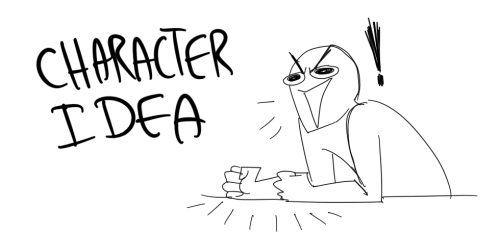
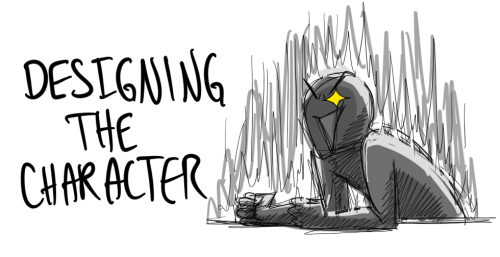
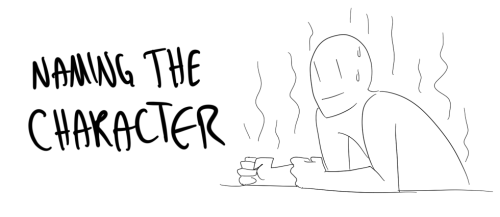
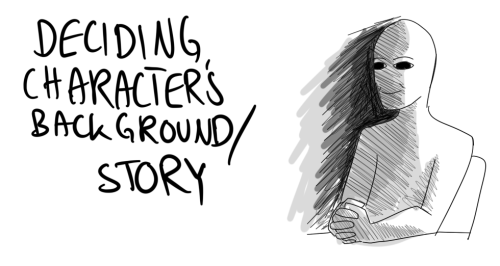
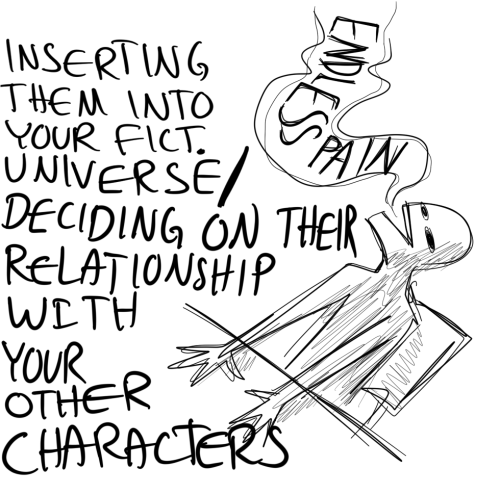
the suffering never ends
You know what’s fucked up to me? That I feel the need—now want, but in the beginning it was a feeling that it was my onus to fight. I grew up too fast, faced and burdened by the cruelties of the world. As a kid, I never wanted anything more than simplicity. Now? I feel it’s my duty—a chore, it seems at times—to worry myself to insanity over people I don’t know. I turn on the news and you know what I see? Chaos. Not controlled chaos. No. Pure, unrelenting, pain-fuelled chaos. My aspirations are now to go to law school instead of become a teacher or something simple that I’d enjoy. Not because of the money, no that’s not why I want to be a lawyer, but because I feel I owe it to the people who take the hate and violence I’m too scared to admit I should be shouldering too. These people came out and, even though there was the chance—almost guarantee—that they’d face violence, prejudice, hate, and be stripped of basic human rights. I should still be able to be a kid. Not because of my age or immaturity. But because I should be able to enjoy life; not fear it.
Apps For Writers I Wish I Had
So, as a writer who’s more lazy than my cats, I spend many a sleepless night thinking up apps for me to use to make the process much easier. These are a few of those.
One: A app where you can enter a name and click ‘search’ and it will tell you if it’s okay to use in a project. You can specify wether it’s a person name, an establishment name, a place name, etc. to refine your search. A possible name would be ‘Name Check’ or some variant. Two: a face claim app. You can specify the basics of your character and it will pull up pictures/face claims matching the description. Eg. ‘hazel eyes’ ‘black hair’ ‘male’ ‘freckles’ and so on getting more and more specific.
Three: an app for job research. You type in the job you have for your character and it pulls up real life accounts of people with that job. It would explain what the basics are, day to day routine, schooling necessary, hazards, time, etc. Note that this only applies to real life jobs, not fantasy
Four: a music app. You give the browser the themes, feelings, etc. of your project and it pulls up music that fits that. Also can define by genre. Also applicable for characters.
Five: kind of goes along with face claim. A scene reference app. You give the feeling, genre, what you know about it, etc. and it pulls up pictures that match that for you to reference. To see it in front of you.
Six: This one is sort of like three. Need to write a scene you’ve never experienced? This gives you kind of like a guideline Do’s and Don’ts, if you will. Someone who’s experienced it explains(to the best of their abilities) what they were feeling. You have to know your character well enough to change those feelings to fit your character. Not for fantasy. Seven: Character name checking. It’s a fucking pain to have to figure out if this awesome name is available to use in a book or anything that’s going to be written by you. With this, all you have to do is type in the name and if it turns green, it’s safe to use.










TOM HIDDLESTON
Art of Villainy - Jaguar
My main problem as a writer is that I don’t write because “I have a story to tell”. I write because there are worlds I want to visit, ideas I want to explore, people I want to meet, conversations I want to hear, emotions that I want to express, and impossibilities I want to make real.
Which means that I still need a fucking plot.
-
 darthmario95 reblogged this · 2 years ago
darthmario95 reblogged this · 2 years ago -
 alainacatherine liked this · 4 years ago
alainacatherine liked this · 4 years ago -
 a-walking-shitpost liked this · 4 years ago
a-walking-shitpost liked this · 4 years ago -
 bluevioletflames liked this · 4 years ago
bluevioletflames liked this · 4 years ago -
 yegreatdragontamingpiratecaptain liked this · 4 years ago
yegreatdragontamingpiratecaptain liked this · 4 years ago -
 clockworkfall liked this · 4 years ago
clockworkfall liked this · 4 years ago -
 ambert-thecrayfae reblogged this · 4 years ago
ambert-thecrayfae reblogged this · 4 years ago -
 ruinati0n reblogged this · 4 years ago
ruinati0n reblogged this · 4 years ago -
 dalenthas liked this · 4 years ago
dalenthas liked this · 4 years ago -
 sweetxsecret reblogged this · 4 years ago
sweetxsecret reblogged this · 4 years ago -
 susie-dreemurr liked this · 4 years ago
susie-dreemurr liked this · 4 years ago -
 mairen-marionette liked this · 4 years ago
mairen-marionette liked this · 4 years ago -
 walkingviolet liked this · 4 years ago
walkingviolet liked this · 4 years ago -
 barbara-gordons-glasses liked this · 4 years ago
barbara-gordons-glasses liked this · 4 years ago -
 korvid-19 liked this · 4 years ago
korvid-19 liked this · 4 years ago -
 unadulteratedhandslightbonk reblogged this · 4 years ago
unadulteratedhandslightbonk reblogged this · 4 years ago -
 unadulteratedhandslightbonk liked this · 4 years ago
unadulteratedhandslightbonk liked this · 4 years ago -
 confused-scream-ing liked this · 4 years ago
confused-scream-ing liked this · 4 years ago -
 ancientbruisesbrokenruses reblogged this · 4 years ago
ancientbruisesbrokenruses reblogged this · 4 years ago -
 ancientbruisesbrokenruses liked this · 4 years ago
ancientbruisesbrokenruses liked this · 4 years ago -
 elkiedear liked this · 4 years ago
elkiedear liked this · 4 years ago -
 c0rpse666 liked this · 4 years ago
c0rpse666 liked this · 4 years ago -
 queensillian liked this · 4 years ago
queensillian liked this · 4 years ago -
 steadypersonpieflap liked this · 5 years ago
steadypersonpieflap liked this · 5 years ago -
 gandar-floid liked this · 5 years ago
gandar-floid liked this · 5 years ago -
 stories-soundtracks liked this · 5 years ago
stories-soundtracks liked this · 5 years ago -
 footyleclerc liked this · 5 years ago
footyleclerc liked this · 5 years ago -
 stormi-i liked this · 5 years ago
stormi-i liked this · 5 years ago -
 zyex liked this · 5 years ago
zyex liked this · 5 years ago -
 plethorapodcast liked this · 5 years ago
plethorapodcast liked this · 5 years ago -
 always-crushin liked this · 5 years ago
always-crushin liked this · 5 years ago -
 hannahisstillhere liked this · 5 years ago
hannahisstillhere liked this · 5 years ago -
 sickbromeo liked this · 5 years ago
sickbromeo liked this · 5 years ago -
 joyislonely liked this · 5 years ago
joyislonely liked this · 5 years ago -
 ishipgayshitsblog liked this · 5 years ago
ishipgayshitsblog liked this · 5 years ago -
 burnmyself liked this · 5 years ago
burnmyself liked this · 5 years ago -
 water-heater7numbers liked this · 5 years ago
water-heater7numbers liked this · 5 years ago -
 unnecessarycraziness liked this · 5 years ago
unnecessarycraziness liked this · 5 years ago -
 mothsmen reblogged this · 5 years ago
mothsmen reblogged this · 5 years ago -
 astral3mi liked this · 5 years ago
astral3mi liked this · 5 years ago -
 catmannwomancat liked this · 5 years ago
catmannwomancat liked this · 5 years ago